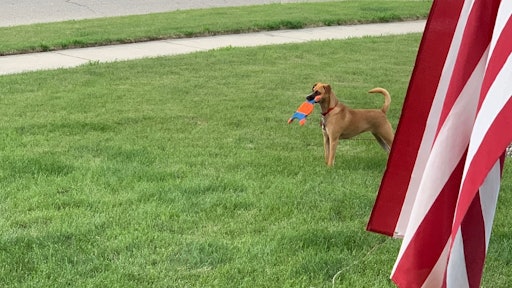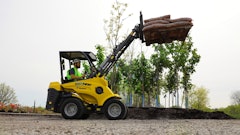
It's almost impossible to have perfect grass and insect-free plants without pesticides. However, if you have a pet roaming around your yard, you need to be careful. Even though the products being manufactured for lawn care these days are much more advanced than they used to be and pet-friendly is just one of the traits you can now find on packaging, warnings must still be heeded.
Here are 5 chemicals deemed dangerous to your furry friends:
1. 2,4-Dichlorophenoxyacetic Acid (2,4-D):
A few recent studies show links between lawn chemicals using 2,4-D to two types of canine cancers. The World Health Organization’s International Agency for Research on Cancer classified 2,4-D as “possibly carcinogenic to humans … based on inadequate evidence in humans and limited evidence in experimental animals.”
2. 4-Chloro-2-Methylphenoxypropionic Acid (MCPP):
These act at multiple sites in a plant to disrupt protein synthesis thus altering growth. Specifically used to control broadleaf weeds, these herbicides as available in commercial form will typically lead to vomiting, diarrhea, and abdominal discomfort. Exposure to large amounts or concentrate/industrial formulas may rarely lead to myotonia, ataxia and tremors.
3. Glyphosate:
This is an amino acid inhibitor that affects metabolic pathways specific to plants (skikemic pathway). These pathways that are not present in mammals. Ingestion typically results in gastrointestinal irritation with vomiting and diarrhea predominating.
4. Iron:
Fertilizers containing iron may pose a risk for iron poisoning, although this is dependent on the nature of exposure and dose (e.g., eating straight from the bag, post spreading, etc.) and the nature of the iron in the product (iron vs iron salt or derivative). Iron toxicosis initially mimics the irritant effects of general fertilizer ingestion with vomiting and diarrhea. Advanced cases or large ingestion may cause more severe signs of hematemesis, melena, lethargy, tachycardia, acidosis and effects on the liver and kidneys.
5. Insecticides:
Some fertilizers may be manufactured with insecticide and/or fungicide ingredients, and are commonly used in rose and flower care products. Imidacloprid and tebuconazole are among the more commonly used ingredients in these products. Ingestion may lead to mild irritation with vomiting and/or diarrhea. Care is typically supportive.
See a full list of unsafe chemicals here.
Always Be Cautious with Chemicals
According to “How Lawn Chemicals and Herbicides Affect Dogs” from mnn.com, “With proper applications of herbicides, the health risks to our dogs is minimal, but you can't guarantee that your neighbors, or the lawn crew you hire will read and follow label directions.”
At the very least, they recommend homeowners need follow label instructions and allow any pesticide residues to dry completely before allowing pets onto lawns that have been treated. Some homeowners may even consider hiring a professionals who was trained in the ways of pet-friendly fertilizer, pesticide or herbicide applications. Always has how long you should keep your pet off the lawn to be safe.
If you witness you pet consuming material that might be toxic, seek emergency assistance, even if the pet seems fine. Sometimes, even if poisoned, an animal may appear normal for several hours or for days after the incident.




























